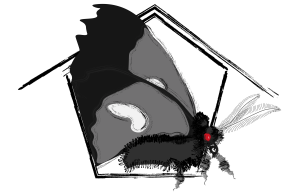Playing a roleplaying game is fundamentally an exercise in design.
As players (both DMs and others) make decisions at every level of granularity, they are engaging in collaborative design practices continually throughout the course of play. Effectively, they are designing the experience (i.e., the game, the session) every time they contribute or participate. On the one hand, this is as obvious as the fact that players and their decisions, descriptions, and questions (and answers) constitute the very lived experience of play. This scales up from character creation (and the reciprocal process of designing or generating characters that fit, or contrast with, a given setting) to other worldbuilding practices of various kinds. (It also scales down to things like word choice when speaking, insofar as how we describe and perform actions and consequences affects table tone, opens up and closes down various options for collaborative worldbuilding, etc.) On the other hand, players don’t typically think of what they’re doing at the table in design terms. Nevertheless: They are doing it whether they know it or not.
In any case, good design is always a function of constraint, and this applies as much to DM materials as anything else. Regarding DM materials, every design element in a module or sourcebook communicates (hopefully) relevant information to the DM. This is one reason why PrinceofNothing‘s No Artpunk compilations (1, 2) are such fascinating exercises in design. They’re fascinating because they’re so classically and idiosyncratically constrained. But the constraints he imposes are also playfully perverse misrepresentations of DM materials and how design inflects those materials, insofar as he seems to think that high-intensity designs (“artpunk”) necessarily degrade or disrupt playability by their very nature. This is patently untrue (and so, something like MÖRK BORG, by dint of appearing very exotic or unconventional in appearance, is communicating something absolutely central about the style and tone of play it solicits from players, not to mention infusing the DM’s workspace with tonal content). Note that I’m not suggesting that all designs are equal, much less equally successful. That design practices are open doesn’t imply that bad design (like bad writing) isn’t a problem.
In any case, here’s a brief statement of the design practices underlying a number of modules I’m currently working on (generally inspired by Games Omnivorous‘ Manifestus Omnivorous and my own interests). Consider it a kind of Moth Hovel Manifesto (v1), at least for now (examples to follow soon):
- Only Z-fold pamphlets (back and front) are allowed.
- Imply more than you explain.
- Include at least two undead factions.
- Make animals figure prominently.
- Embrace camp and intertextuality (i.e., shameless pastiche).



Leave a comment